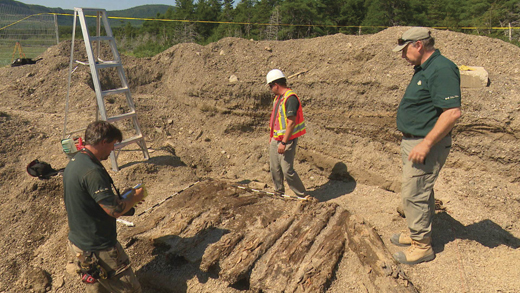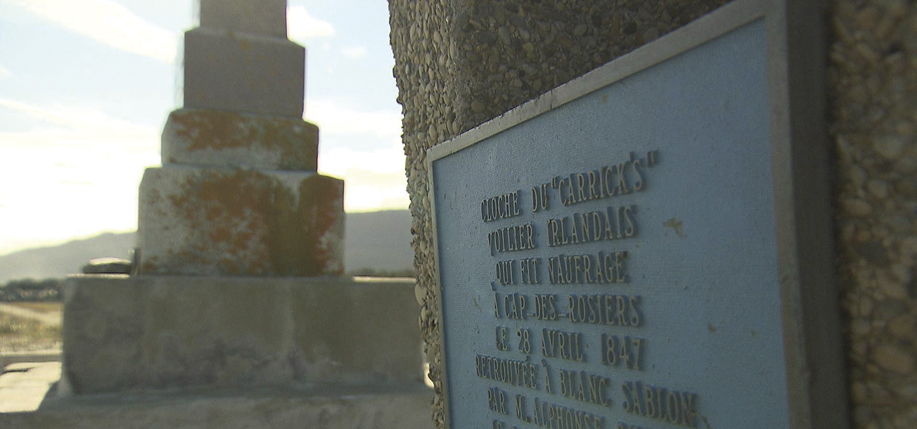Bones of Irish children were found 170 years after they died on a “coffin ship” en route to Canada in 1847. Vertebra and jaw bones were identified among the remains, believed to be of Irish children fleeing the Great Hunger, that were discovered in 2011 on Quebec’s Gaspé Peninsula, about 500 miles from Montreal, in Canada.
Canadian scientists have concluded that the bones that washed up that same year after a harsh storm were those of two seven-year-old boys and an 11-year-old boy, all of whom suffered from severe malnutrition. Those found in a mass grave in 2016, dug up in the process of a beach restoration, were the bones of another 18 individuals, mostly women and children, and are believed to be former tenants of Lord Palmerston who were evicted in the heights of the great starvation in 1847.
In March 1847 the two-mast brig Carricks of Whitehaven, under the command of Captain R. Thompson, sailed from the port of Sligo carrying tenants from Lord Palmerston’s estates in the county – 20,000 acres. Lord Palmerston, an absentee landlord named Henry John Temple, was one of Britain’s most powerful politicians, who served twice as prime minister. He evicted some 2,000 of his Irish tenants for non-payment of rent during the Great Irish Famine. One Canadian official compared conditions on the vessels he chartered to “shovel out” his starving tenants to those of the slave trade.
On April 28 the Carricks ran into a severe storm in the Gulf of St. Lawrence and sank after striking a reef near Cap-des-Rosiers in Gaspé, Canada. Of the 173 passengers on board only 48 reached the shore. Of the crew, all survived except for one boy. Nine had already perished on the 28-day journey.

“Our skeletons reflect what we eat,” said Isabelle Ribot, an associate professor of bioarchaeology at Université de Montréal. The analysis of the bones found that they belonged to people whose diets were agriculturally dependent, specifically potato- based, which is characteristic of a rural population and typical of the Irish at the time. The bones also showed evidence of malnutrition.
“The tragic events of the Carricks shipwreck are a startling reminder of just how difficult the journey was for the travelers, and that not everybody was lucky enough to reach their new home,” said Diane Lebouthillier, MP for Gaspésie–Les Îles-de-la-Madeleine, in a statement.
The remains were transported to Forillon National Park and a funeral service was held Thursday, July 4, after which the bones were buried near the Irish Memorial on Cap-des-Rosiers Beach. In recent years, a monument has been erected to their memory by the parishioners of St. Patrick’s Church in Montreal.
The Un-quiet Ghost of the Carricks, a film documentary currently in progress, will trace the journey of the Irish-speaking Kaveneys’ voyage to Canada and follow the French-speaking Gasé Kavanaghs (whose great-grandparents were tenants of Lord Palmerston) as they reverse the journey – 168 years later. ♦


Is this documentary complete yet?